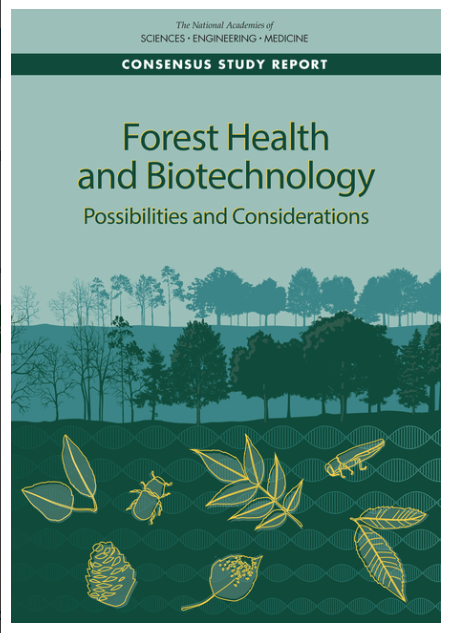 At the beginning of this year, The National Academies of Sciences, Engineering, and Medicine (NAS) released a report entitled Forest Health and Biotechnology: Possibilities and Considerations. The report was the culmination of more than one year’s worth of public meetings, webinars, and writing. The report, along with many of the presentations and recorded meetings, are available at: the National Academy website
At the beginning of this year, The National Academies of Sciences, Engineering, and Medicine (NAS) released a report entitled Forest Health and Biotechnology: Possibilities and Considerations. The report was the culmination of more than one year’s worth of public meetings, webinars, and writing. The report, along with many of the presentations and recorded meetings, are available at: the National Academy website
The committee consisted of 13 members assisted by two NAS staff persons. The members had varied backgrounds including biological research, law, and sociology. While there is a wealth of information to be had on the website above, there are three major takeaways from the report which have direct consequence to the work of The American Chestnut Foundation (TACF).
First, the committee defined the term forest health. This may seem like a trivial task, but, in reality, is incredibly important to a regulatory framework. At present, regulations around many biotechnological systems, including genetically modified organisms, were created for agricultural and commodity crops. While trees can be considered a crop, the issue of the American chestnut restoration is not an agricultural one, but one of forest health. To study how biotechnology can be applied to forest health, the committee had to first wrestle with how that is defined and can be differentiated from how the technologies are currently applied in agricultural systems.
Second, while the committee endorsed the use of biotechnology for forest health, they did so with caution and noted areas where more research is needed. This leads to the third major takeaway, that biotechnological applications to forest health should not be done in isolation or as the only solution to these problems. In addition, the committee explicitly urged additional funding and effort toward traditional breeding solutions, in addition to modern biotech solutions, to the many problems facing forest health.
Again, this third takeaway may seem trivial or obvious, but such a well-researched finding lends further credibility to TACF’s approach to restoration, namely 3BUR (Breeding, Biocontrol, and Biotechnology United for Restoration), which seeks to integrate a variety of techniques toward American chestnut restoration.
